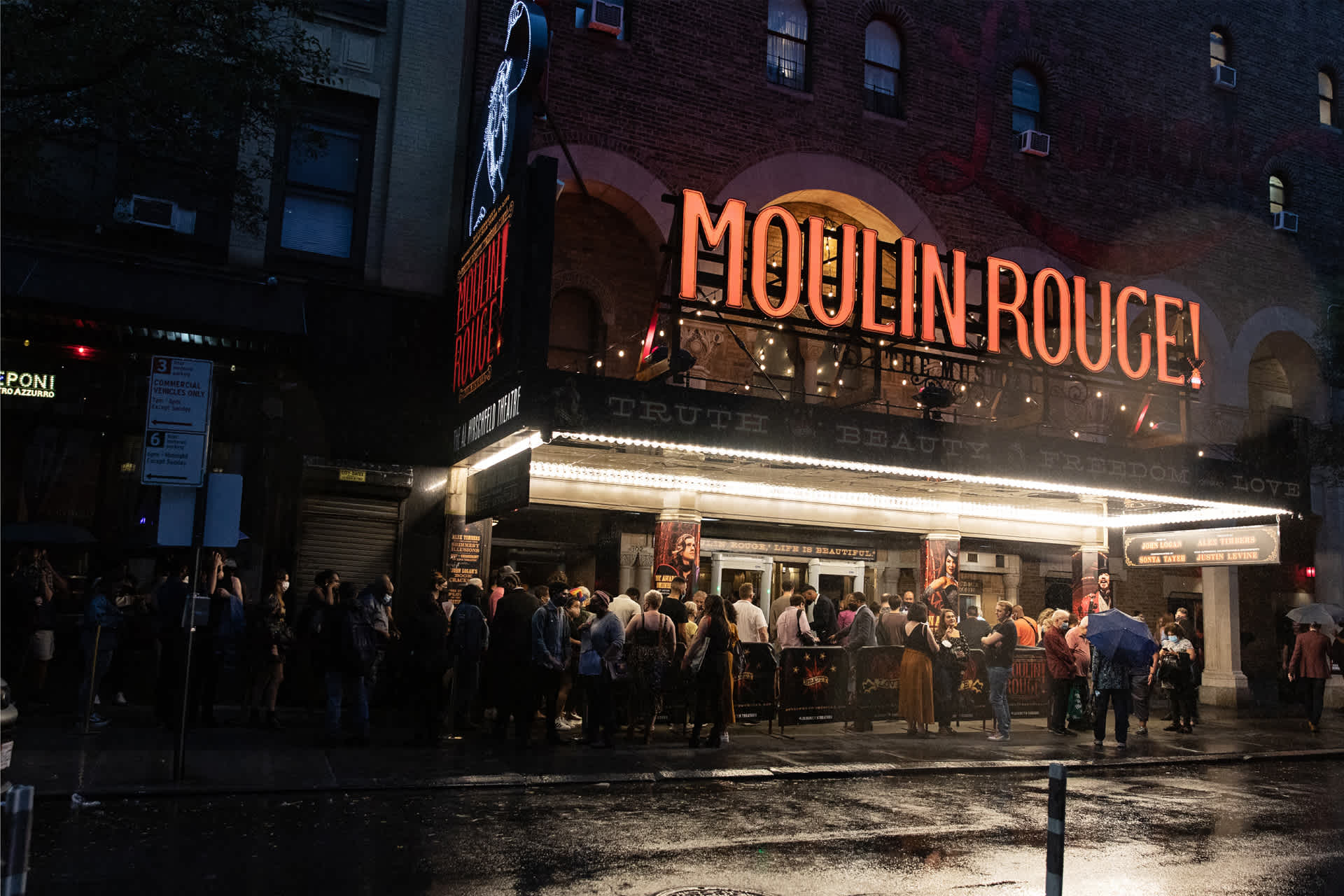In the Spotlight

The backstage halls of Broadway’s Al Hirschfeld Theatre, in New York City, are filled with the rustle of tulle and chiffon. The theater is home to Moulin Rouge! The Musical. In a basement room, Tony Award–winning costume designer Catherine Zuber and her team are fitting Amber Ardolino in a custom costume. Even her velvet gloves and dance shoes get a close look. Ardolino is a “swing”—an understudy ready to step in for multiple roles at a moment’s notice—but every element of her many outfits gets the same attention as that of the show’s stars.
This is no small task for a show that requires ensemble costume changes in nearly every scene. The play is based on the 2001 movie musical of the same name. The stage show, directed by Alex Timbers, opened in July 2019.
Zuber has worked in costume design for decades. She studied it at the Yale School of Drama, and won Tonys for her work on shows including 2018’s My Fair Lady and 2015’s The King and I. Zuber is not daunted by the task of bringing the glamour of the famed Moulin Rouge cabaret to life. For this show, she worked on detailed costume sketches with specialists in New York, Connecticut, London, and Germany.
“It’s not period accuracy at all, but it feels like it could be,” Zuber told TIME about her approach. “It’s not what the Moulin Rouge was actually like at the time. It’s a fantasy of maybe what it could have been.” Her designs mix historical references with more-modern twists that echo the contemporary music in the show.
And then there are the technical details that make the costumes shine onstage. One gown for the female lead is decorated with more than 3,500 Swarovski crystals, each placed on the garment by hand. There are hidden magnetic clasps for seamless mid-scene quick-changes and special supports for shoes.
“It’s always great for any costume designer to see when the actor becomes the character and embraces their costume,” Zuber says. “And when they let you know that the costume you gave them really helps them be that character? That’s always so thrilling.”
This story was originally published in TIME on July 24, 2019.


